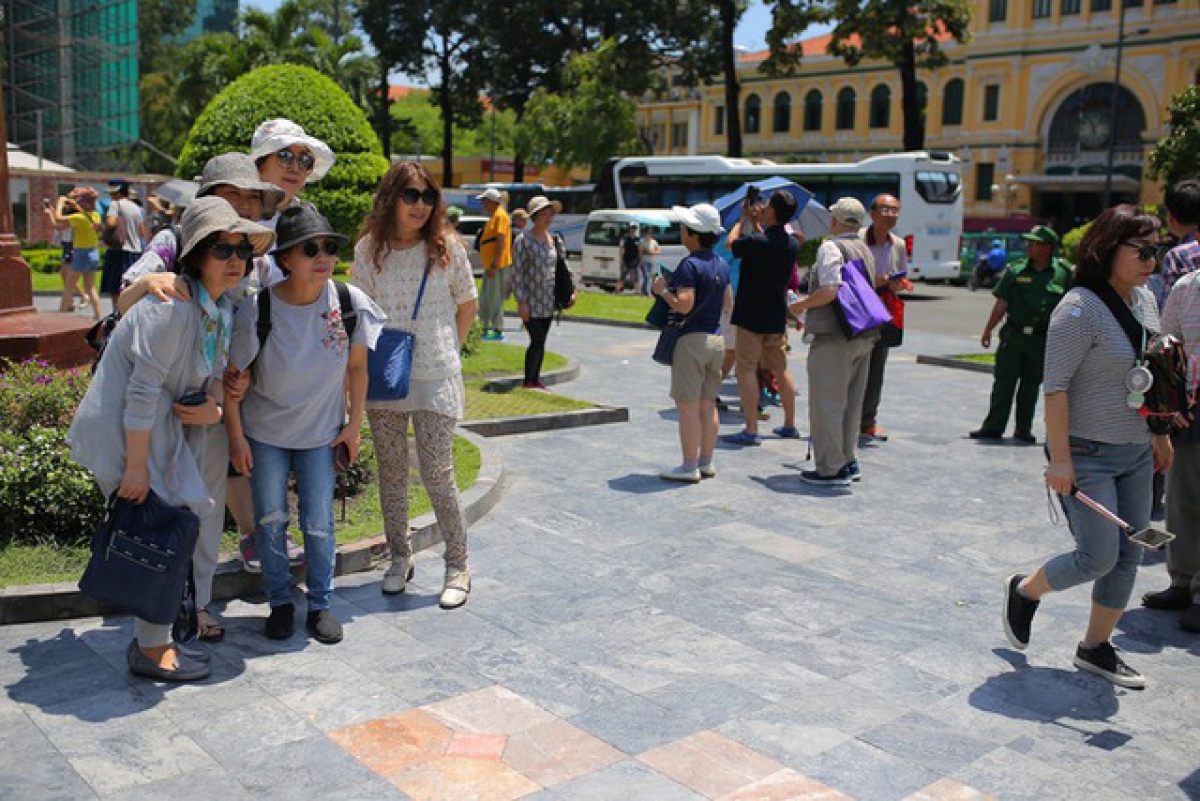Vietnamese tourism firms are concerned they will be losing out to regional rivals when it comes to attracting Chinese holidaymakers if favourable policies are not introduced.

Chinese tourists visit Ho Chi Minh City. (Photo: NLD)
China is Vietnam’s largest tourism market, with more than 5.8 million arrivals coming from the northern neighbour in 2019, accounting for one third of the total number of international visitors to the country. Following their recent announcement of plans to ease COVID-19 travel restrictions and reopen borders in early January, domestic tour operators expect the move to help spur the recovery of Vietnamese international tourism.
The Vietnam National Administration of Tourism has reported that the country welcomed more than 870,000 foreign arrivals in January, mostly coming from the Republic of Korea, the United States, and Thailand. The number of Chinese arrivals remained modest, standing at nearly 16,000.
According to travel businesses, it is not easy to utilise the full potential of this lucrative market after a three-year hiatus caused by the impact of the COVID-19 pandemic. Many find it difficult to forecast the Chinese market’s movements due to information disruption. In addition, it is a large tourism market with special features that requires joint cooperation among the central destination management and promotion agencies in order to be able to receive a large number of visitors.
Cao Tri Dung, chairman of the Da Nang Tourism Association, says local tourism businesses are fully prepared to welcome guests, although they have yet to receive significant feedback from partners, despite closely monitoring the market. “The business community is getting ready, but the market hasn’t really rallied yet,” he says.
In order to receive a large influx of tourists in the near future, Dung suggests that the central tourism management agency, and even the Government, implement a bilateral exchange on tourism development policy with China. “Based on this policy, businesses of the two sides will work on specific plans to send guests, helping to accelerate the recovery of the market,” elaborates the executive.
Meanwhile, Tu Quy Thanh, director of Travelink, says several Chinese partners have resumed connections, with many enquiring about information and products, although they suggested need more time to convince their visitors.
“Although we really want to welcome visitors back, the middle of this year will probably be the prime time for significant market movements,” says Thanh, explaining that it will be difficult to attract holidaymakers from travel businesses in the early stages because this segment has been severely affected by the pandemic.
Most notably, recent surveys show that despite Chinese tourists searching for a lot of information about destinations throughout Asia, there are not many Chinese people looking for information on Vietnamese tourism. This will make it more difficult to attract Chinese travelers in the early stages of the year, whilst the market also needs to be given a boost, such as a loosened visa policy for better growth.
In a recent report, ForwardKeys, a company that analyses travel trends, forecast that Southeast Asian destinations will be first to benefit from the return of Chinese tourists. However, other countries with few COVID-19 quarantine regulations and simple visa procedures will also welcome most visitors from China.
According to ForwardKeys, the number of visitors from this market to Thailand, Indonesia, and Cambodia is growing strongly thanks to their open policies. Indonesia has exempted visas for Chinese tourists, while Thailand has granted visas at the border, and Cambodia has also facilitated tourists’ travel.
“The easing of visa procedures and the implementation of national marketing and work programmes in the country’s major cities are crucial for a significant market recovery. For the Chinese market, doing business at the enterprise level is difficult to bring about great results,” Thanh says.
He suggests that Vietnam move to issue a long-term visa, lasting for a year for instance, that allows Chinese tourists to visit the country many times in an effort to increase the nation’s competitiveness with regard to this important tourism market.